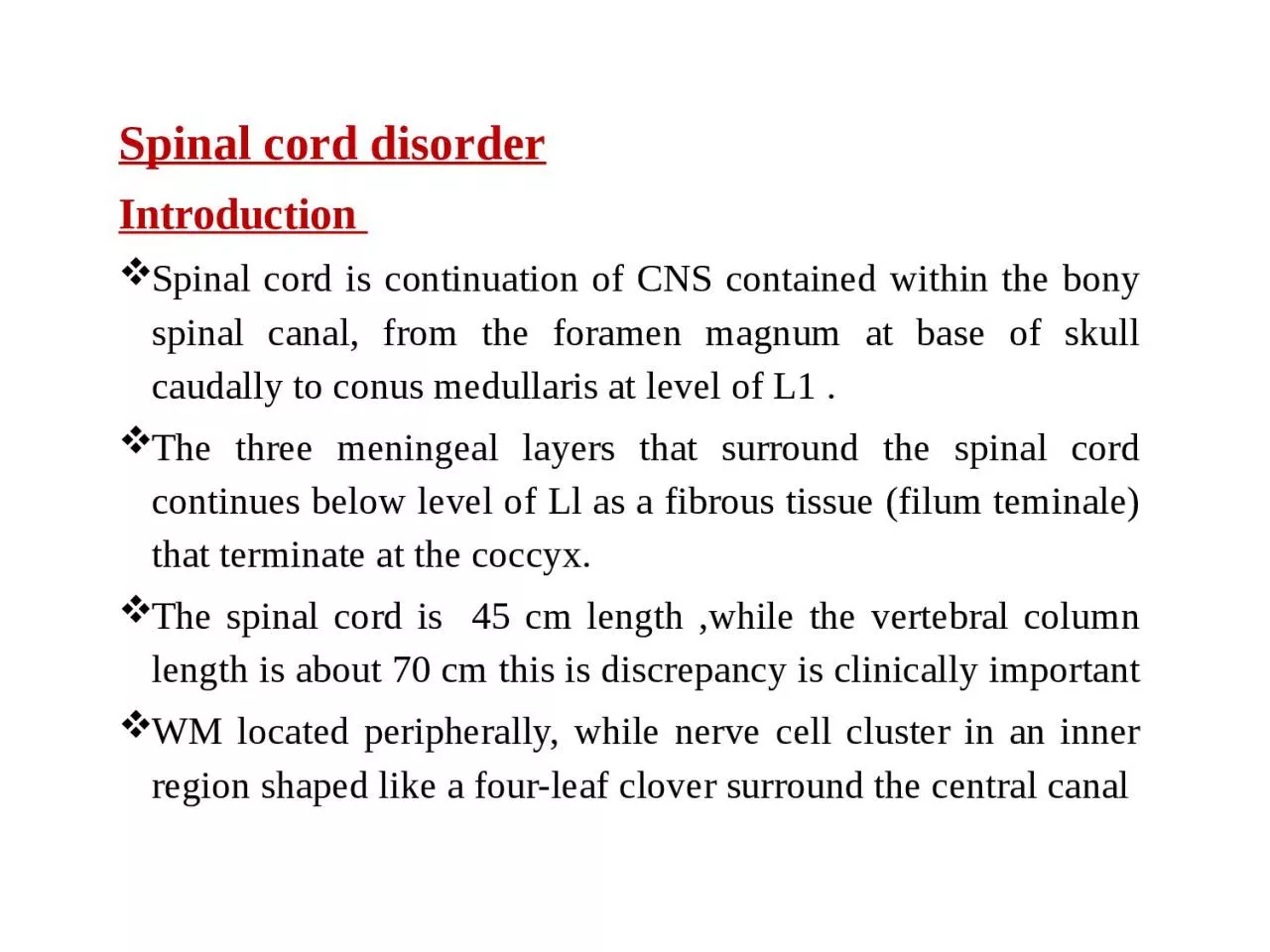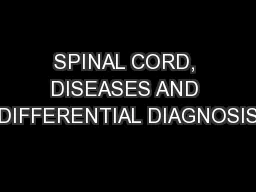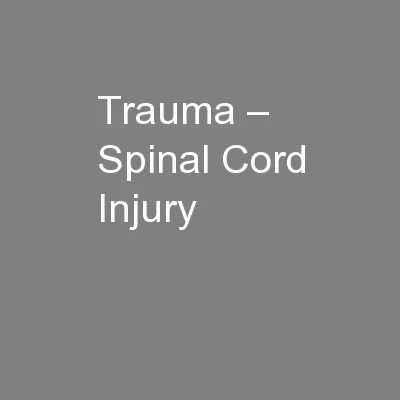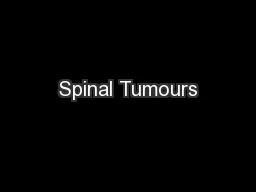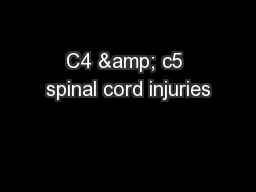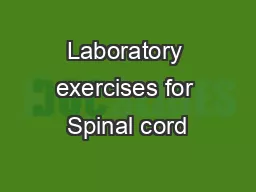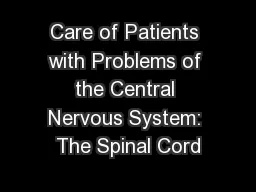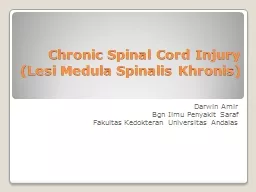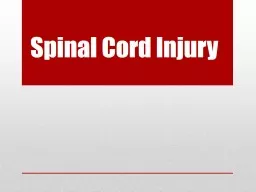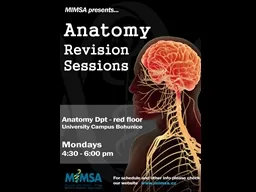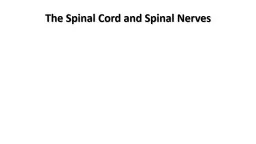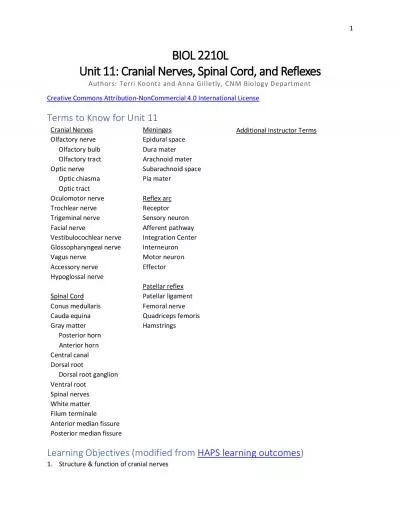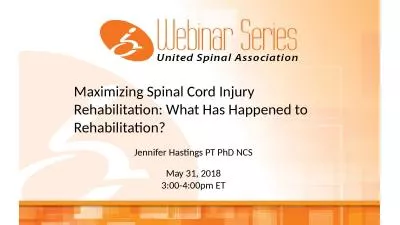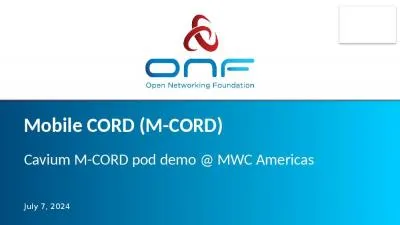PPT-Spinal cord disorder Introduction
Author : madison | Published Date : 2024-02-02
Spinal cord is continuation of CNS contained within the bony spinal canal from the foramen magnum at base of skull caudally to conus medullaris at level of L1
Presentation Embed Code
Download Presentation
Download Presentation The PPT/PDF document "Spinal cord disorder Introduction" is the property of its rightful owner. Permission is granted to download and print the materials on this website for personal, non-commercial use only, and to display it on your personal computer provided you do not modify the materials and that you retain all copyright notices contained in the materials. By downloading content from our website, you accept the terms of this agreement.
Spinal cord disorder Introduction: Transcript
Download Rules Of Document
"Spinal cord disorder Introduction"The content belongs to its owner. You may download and print it for personal use, without modification, and keep all copyright notices. By downloading, you agree to these terms.
Related Documents

